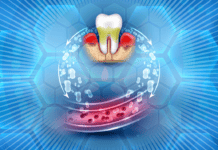We all have those patients who simply hate what it is that we do. Whether it’s updating health history, laying back in the chair, probing, too much water, bad flavors, or scaling their teeth, they hate it all. Desensitization is the process used to overcome each of the objections to create an appointment free of stress and which can improve the next appointment. This process can be used with any patient that experiences stress or objections in the chair. As soon as we sense the patient has disengaged or has become tense, we need to stop and begin the process of desensitization by questioning first. What are they feeling? What is causing the tension or fear? The most important aspect is getting the patient to express what portion of the appointment induces fear or discomfort and acknowledging we can help to overcome that particular issue.
Break it down for them. Let’s say it’s the probing that causes stress. What part is the issue? Are they fearful of the poking and the way it feels on the tissue? If that’s the problem, there’s a simple solution; offer topical anesthetic and demonstrate how much more comfortable they can be and thank the patient for sharing their feelings. Express that you understand their concern and you will note in their chart to use topical prior to probing. Perhaps the patient is concerned the numbers will show they have progression of disease. In this case, perhaps charting can be done silently, so the patient doesn’t have to hear the numbers as they are being recorded, or maybe the patient can wear a headset and be listening to music or a movie. After recording probing depths, show the areas of concern on a model, then in the mouth with a calm, compassionate demeanor, offering solutions for better health.
Does your patient hate the ultrasonic? Before jumping to hand scaling only, work the process of desensitization in tiny steps to see how to overcome the objection. Is the fear based on the water spray? Simple alternatives may help. Can the water flow be reduced, can the patient turn to or away from you to collect the water in the cheek area, can the suction be increased, can an Isolite® be utilized? Almost every procedure offers multiple options, and our goal is to play detective until we find the specific solution that meets our goal while addressing patient concerns alike. Sometimes something as simple as putting the headrest up lessens the fear of choking.
Try all sorts of remedies, take note of what works, make sure the patient knows the solution will be written in their chart and used at subsequent appointments. Is the procedure uncomfortable? For dentinal hypersensitivity, Tom’s of Maine® Rapid Relief with arginine or Colgate’s® new Anywhere Anytime™ can be polished on as a pre-procedural polish. A pre-procedural polish of desensitizer also keeps the rest of the appointment more comfortable. Kulzer Gluma®, Tokuyama Shield Force® Plus, or other desensitizing medicaments can be applied which can give patients relief lasting beyond the appointment. Patients with a smartphone can take a photo of any over the counter product you use so they can easily purchase and apply at home to decrease the sensitivity long-term. Huge win for the clinician and the patient!
A topical anesthetic can be applied for gingival tenderness if that is more comfortable for the patient. If the high pitch sound is the issue, noise-canceling headphones or a headset with music or a movie can be used. Look for simple ways to become a hygiene hero. Your patient will appreciate you for caring enough to make them completely comfortable and that you acknowledge not every patient is happy to receive dental treatment.
Is scaling an issue? For some, it can be the sound of a really sharp metal object scraped along their tooth surface that causes auditory discomfort. For this, try the headset solution. If hard or soft tissue pain is the issue, the above desensitizers or topical can help alleviate discomfort. If needed, local anesthetic can be utilized.
Prophy paste is an issue for many. If it’s as simple as a taste preference, try multiple flavor options. If it’s the texture that causes sensory issues, try a lighter grit or use toothpaste instead of prophy paste. Perhaps you can offer the prophy jet as an option. Go above and beyond expectation to make your patient comfortable and even happy to arrive in your operatory. Apply lip balm to ward off chapped lips, maybe a facial towel after, especially if the prophy jet was used.
If a patient consents to fluoride, yet doesn’t necessarily like the procedure, check to see if it’s the flavor, texture, or what in particular, is causing the problem. Many wonderful flavor options are available, and each fluoride manufacturer has different levels of stickiness. Try painting varnish on your patient’s finger and let them feel it before applying to get approval or let them smell the fluoride to get consent on the flavor. Paint the buccal surfaces, so the tongue is not as impacted by the varnish and allow the product to spread via saliva to the lingual, interproximal, and occlusal surfaces.
Our goal is to create an environment where the patient feels comfortable to express what concerns them and makes the appointment less than ideal for them. Once comfortable and trusting, as clinicians, we can then find alternatives to overcome each of the objections. This is the process of desensitization; we find ways to remove the fear or discomfort and allow the patient to relax in the chair. When we create an environment free of fear and discomfort our patients will be more engaged in the process of dental health. A win for everyone!
SEE ALSO: 7 Ways to Turn Awkward Appointments into Amazing Ones
DON’T MISS: The Safest Dental Appointment Begins with an Updated Medical History











